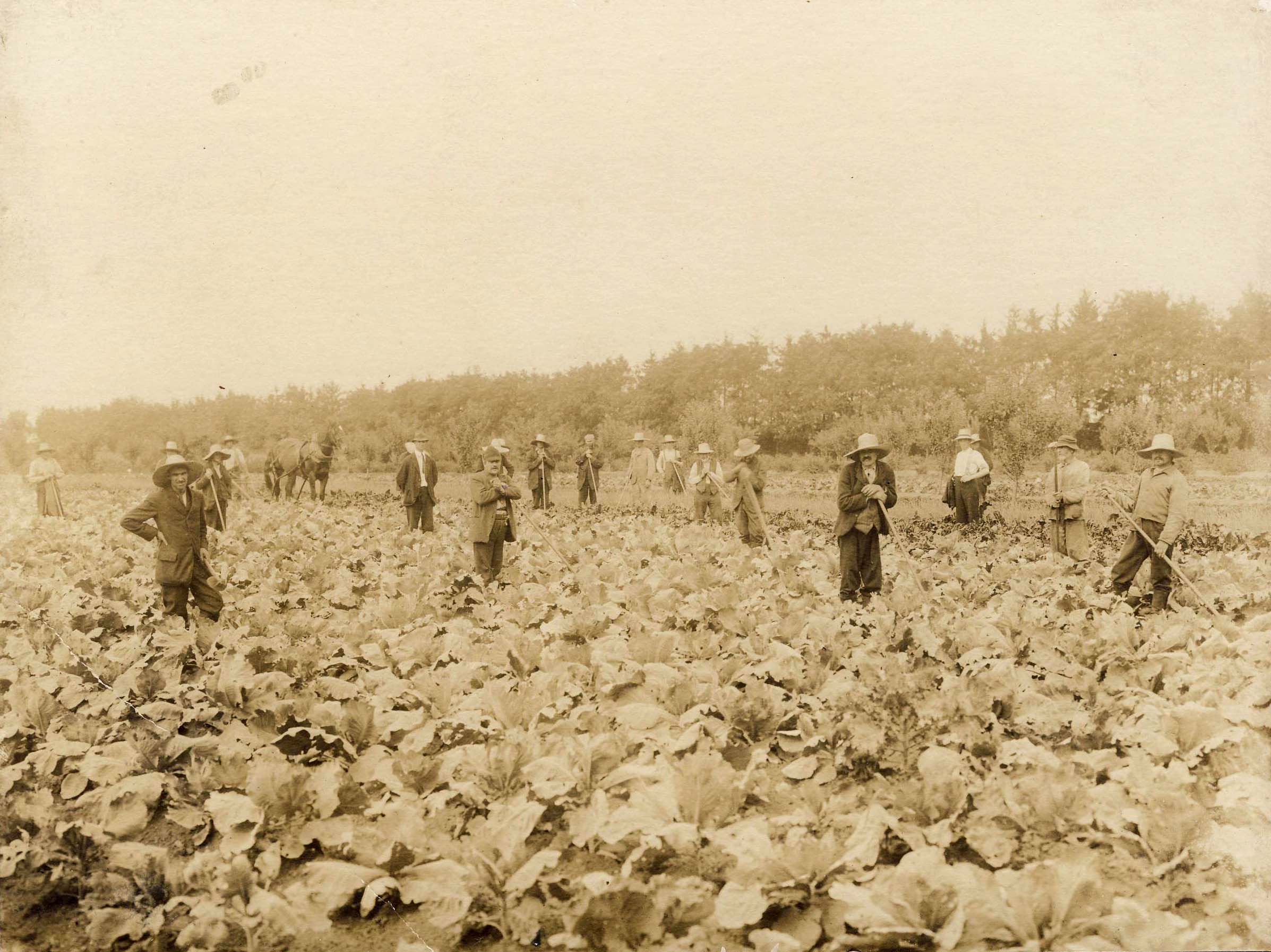Farming and Gardening
When the London Asylum for the Insane first opened, one of the leading forms of labour used in moral therapy was farming. Patients often helped the chief farmer and his hired assistants to cultivate approximately 200 acres of the Asylum's designated farmland. The produce harvested included cabbages, tomatoes, lettuces, radishes, onions, as well as small fruits such as strawberries, gooseberries, currants, and raspberries. Apples were also gathered from the Asylum's own orchard. These vegetables and fruits were consumed by the staff and patients of the Asylum. In order to maintain a healthy diet in the winter, a cannery was opened to preserve fruits and vegetables, which was another place for patients to work. Occasionally, the crops were so successful that the LAI was able to sell produce at fair market value and turn a profit. However, as Dr. Henry Landor stated in his Annual Report of 1874, "the farm is for the health and the occupation of patients before all other considerations, and that object is fully attained at the farm of the London Asylum,and is accompanied by [ample] profit."
Patient duties also included caring for the Asylum's many farm animals, which could be found grazing on approximately 8 acres of pasture land. In the cold winter months, the LAI relied on a constant supply of fresh pork. The Annual Report of 1875 recorded that two hundred pigs were killed and consumed over the autumn and winter months. In 1891 it was reported that 36 cows produced roughly 300 quarts of milk a day, another important component of a nutritious diet.
Much like today, gardening was offered as a therapeutic form of labour at the LAI. Patients landscaped approximately 20 acres of land, and assisted hired gardeners in planting thousands of geraniums, petunias, and willow hedges around the grounds. As forms of labour, farming and gardening continued to be implemented throughout the twentieth century.
